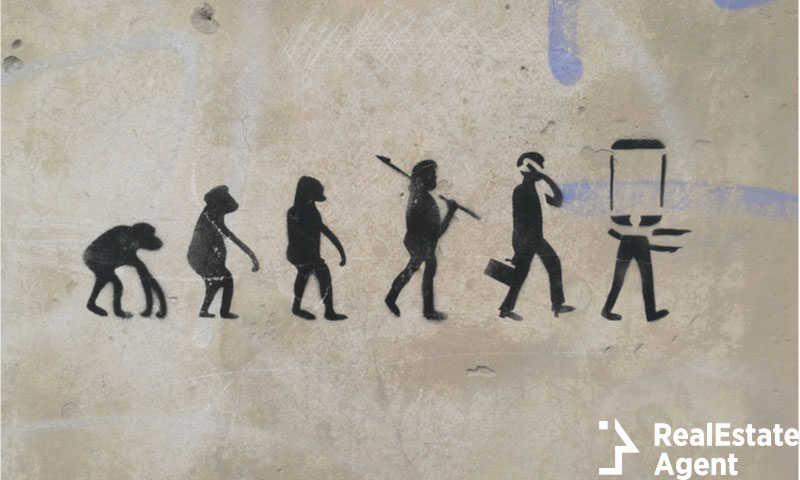The great Benjamin Franklin was once quoted as saying, “A house is not a home unless it contains food and fire for the mind as well as the body”. When it comes to special needs housing, this might not be quite as applicable as it might be under other circumstances.
When you live with a person who faces mental-health issues, no amount of books will keep him/her warm. Special needs housing bears a closer resemblance to that mentioned in this quote from Ralph Waldo Emerson: “A house is made with walls and beams; a home is built with love and dreams.” The feelings felt inside special needs housing are far more important than how that housing may happen to look.
The agencies responsible failed to account for special needs housing from their outset, and now they are inventing programs over programs and qualification rules over more rules. That’s because most households with at least one person with a disability can’t afford to go the “normal” route in order to buy an affordable property. With this being the case, is it any wonder so many rent?
The plight of those in need of special housing
When it comes to housing for special needs adults, loans can feel like just another limitation to add to one’s preexisting physical or mental obstacles. As if their own disability wasn’t limiting enough and stealing from the joy of living, loans for special needs housing often feel like a straitjacket for those forced to seek them. People with special needs are wildly underappreciated in this country which we so arrogantly consider the best in the world.
Who should get more involved and care more about the poor and disabled if not the huge corporations which derive such vast profits from the work of the able minded and able bodied? We have yet to see the human side of the banking system, just as we have yet to see more social involvement from these decadent corporate monoliths.
Until now, they have turned a blind eye. Ever heard of banks investing their easy profits, their assets, in special needs housing? No, you probably haven’t. I would more happily pay my mortgage on time every month knowing that part of that interest provided a warm meal to someone, a shelter for the homeless, and education for someone with special needs instead of paying for ATM service bills, overpriced rents, and wasted utilities.
What needs to change?
After so many years of loans and mortgages, how is it possible to have over 510,000 homeless people in the US? That means that they could have a town of their own in every state – 10,000 people each if they decided to group.
But no, banks take home all the earnings, giving no heed to the plight of those who require special needs housing. They are the pulse of the economy and alter the S&P 500 index, so they can’t mess it up by getting involved in “small” social projects. “Earn more and care less” is their guiding principle.
In the meantime, down here, in the real world, families with special needs members who need to seek special needs housing must go the traditional way, with a 25- or 30-year mortgage. Or rent. But banks, as the largest providers of mortgages, refuse to get involved in the lives of young people living with a disability as they do in the lives of older disabled people. Where is the love? Where are the dreams? Or are these simply dreams with a deadline?
How to Find Housing for People with Special Needs

She was there again. Eyes wide open in front of the narrow, rugged door of the old elevator, hands clenched on the push handles of her daughter’s new wheelchair. She smiles today because the lift is not out of service. Otherwise… Every time the doors open Jane recalls that painful day when she struggled to bring Ania into the world.
After a long, trying delivery, the doctors gave her the soul crushing news: Ania had suffered hypoxia, and her brain might be damaged. To what extent, Jane had yet to find out. Their lives have never been the same again.
Year after year, Jane and her husband learn to live with a daughter with special needs, but they have yet to find a better place to live. Jane can stand that elevator door no more. She will soon meet with a real estate agent specialized in housing for families with disabled children like her.
We hear many stories like this, and we care about them all, that’s why we try to find the best residential communities for adults with special needs. Before we look at what special needs housing is and what it should entail, let’s see what “special needs” mean.
The UN Convention on the Rights of Persons with Disabilities (UNCRPD) recognizes that disability is an evolving concept. When you say that someone has special needs, in most cases it means that they have some sort of difficulty which can be overcome only with the help of others – a family member, a caregiver, or a medical assistant.
Special housing for special people
People with special needs have specific health problems that don’t allow them to live completely independent or unsupervised; in a word, they require special needs housing. But to be more exact, we should borrow the definition of disability from the American Community Survey, which looks at six crucial health aspects: hearing disability, visual disability, cognitive disability, ambulatory disability, self-care disability, and independent living disability.
Then of course, there is PTSD – the post-traumatic stress disorder, with almost 1 million cases. Ania, for example, couldn’t walk and had cerebral palsy, so she needed someone to help her move around and enjoy the little things most of us take for granted.
Disability is part of our human experience. Not everyone with a special need has been born that way. We must keep in mind, though, that everyone might experience it later in life, either permanently or temporarily.
How are people with disabilities doing financially?

I could hear you utter “Poor Jane!” as you were reading her story… And you know what? You were right! She is poor! According to Cornell Disability Statistics, Ania is among the 26.1 % non-institutionalized persons with a disability who were living below the poverty line in 2017.
A notable majority of people with disabilities are either unemployed, under-employed or earn lower wages. The actual numbers don’t even matter because we wouldn’t be taken by surprise. We, unfortunately, see a link between disability and poverty, and for sure, there is a strong one. Given this statistic, it’s easy to see those with disabilities have trouble finding special needs housing.
To add insult to injury, though, let me tell you that most individuals with disabilities are unable to save money for an emergency or unforeseen eventuality, so 70% of individuals with disabilities responded that they might not be able to come up with $2,000 to meet an unexpected expense. The situation gets worse among the elderly with disabilities. These aside, there is this fear of losing SSI or SSDI financial support.
To qualify for this aid, people with disabilities must not have more than $2,000 in their bank accounts, or $3,000 as a couple. According to the Social Security Administration, SSDI stands for Social Security Disability Insurance and is paid to those who are insured. Supplemental Security Income, or SSI, is paid based on financial need.
So, if our administration is regulating special needs funding so tight, the same administration can adopt laws that make everybody rich overnight. But the struggle with poverty is too profitable for the banking system. As long as everybody is in the red, there will be room for even more debt – for many, a sad truth; for a chosen few, a profitable business.
Finances and those with special needs
Studying personal finances is a way of fighting for financial freedom. There are many books on this topic, and a very well known author is Dave Ramsey, for sure. But when it comes to helping adults with special needs and their caregivers get better control over their monthly income and expenses, the National Disability Institute got really involved and prepared an Inclusive Financial Education Toolkit which is available for free to download. I know it’s hard to accept, but if you really want to take saving money seriously, then you can make it work around a strict budget by learning to focus on needs rather than wants. After all, saving money is one of the most important things for individuals with disabilities to focus on when trying to find special needs housing.
Special needs education

Special needs housing is not the only thing people with disabilities need to worry about; access to education is important for children with special needs and their parents is imperative as well. For example, a parent whose child was diagnosed with autism will want to learn more about this condition and how to accept it and live with it, while taking their child to occupational therapy, speech therapy or physical therapy.
There are kids with learning disabilities (LD) as well – one in three parents is not prepared to take on the challenge, and only a third are optimistic about their ability to cope. Learning disability puts kids at higher risks for bullying. 66% of kids with learning disabilities are boys. Among the common learning impairments are dyslexia, dysgraphia, dyscalculia, and dyspraxia. Almost half of the adults with LD are employed and usually earn $25,000 or less per year.
Besides learning disabilities, which prevails among students ages 6-21, the next are speech impairment, intellectual disabilities, autism, emotional disturbance, developmental delay, hearing impairments, orthopedic impairments, visual impairments, traumatic brain injury and deaf/blindness. Mental disorder is a hardship for 1 in 5 kids.
According to the Individuals with Disabilities Education Act (IDEA), enacted in 1975, all children with disabilities between 3-21 years must be provided free public school education, depending on their needs. However, 3.1% of infants and toddlers born through age 2 received early intervention services in 2016.
Another 6 million students (9%) ages 6 through 21 have received education under IDEA, Part B. More than half of the students (63.1%) have received education inside a regular class, and less than 3% attended a separate special needs school. Over 90% of the students participated in a state math assessment.
On the bright side…
The good news is that 67.4% of students ages 14 through 21 who complete education under IDEA, Part B, graduate with a regular high school diploma. However, the percentage of students who drop out of this educational scheme is 17.5%. But many exist special education for good reasons, like to attend regular school (almost 10%).
So, the situation is not too dramatic. Most students with a disability turn out to be employable and could achieve a certain level of independence. And as we will see in the next section, more and more companies are aware of this reality and are opening positions for people with disabilities.
Do people with disabilities work?

Yes! Finding special needs housing is virtually impossible unless one has a job. Most people with a moderate disability can find a job, and 44% of them are employed full time, year-round. More and more companies see people with disabilities as being not inferior but unique in the skills they have. Companies that hire people with various impairments are Home Depot, Target, McDonald’s, Walmart, Goodwill, Ikea, Stop and Shop, Acme and many more.
When independence is not possible, the plight of those seeking special needs housing is grim. It is almost impossible for a person with a severe disability to get hired at a job, making it all the more difficult to find special needs housing. Statistics published by the US Bureau of Labor pointed out that 18.7 percent of persons with a disability worked in 2017.
Most men and women with disabilities were employed in nonagricultural industries like education and health services, retail trade, and manufacturing. The Government employs 14.4% of those who live with a less severe disability while only 10% choose to take on greater responsibility and work as self-employed.
Their productivity is usually lower and might work on minimum wage. Even so, they risk losing some kind of financial assistance due to “higher incomes.” Then, discrimination is another issue. Women with disabilities face double discrimination. But these are problems faced by people who have no disability as well. A lot needs to be done in order to integrate people with disabilities into their communities fully. But it would be useless to try to discuss here why most parents of children with disabilities think it would be better for their children to live and work together, in one place. Everybody has a different opinion on how the life of people with various impairments should look like. One thing is for sure: they all need a place to live, so let’s see how they are doing in this area.
Find Special Needs Housing

The U.S. Census Bureau, American Housing Survey reveals that there are currently 17.2 million households with at least one disabled person, 22.2% of the total number of households. But in 2015, more than 40 million people were living with a disability in the United States. These numbers mean that in some homes there are more people with special needs. With such high demand for special needs housing,
In 2017, there were 1.7 million people with disabilities living in a manufactured or mobile home and 506,000 households with a disabled person lived in 1-bedroom units. But most families who care for a special needs individual live in 3-bedroom units – 8.85 million households, actually.
If we change the perspective, we find that another 9.8 million households with a disabled person are renters, and almost half of them have an annual income of less than $20,000. According to the Fair Housing Act and the Fair Housing Amendments Act (42 U.S. Code §§ 3601-3619, 3631) landlords are not allowed to refuse to rent their property solely by reason of renter’s disability. They must do everything to accommodate the needs of a disabled child or adult, giving them equal opportunity to use and enjoy their home as well as the common spaces.
Jane and her husband live in a 2-bedroom unit that is on the 5th floor of an apartment building not at all friendly with Ania’s wheelchair. Jane knows that Ania has one of the most common disabilities. 7.1% of the civilian non-institutionalized population is dealing with walking difficulties and can’t live alone. But Ania is becoming a young adult and needs more space. And she has gained some weight lately, too. But there is hope…
Government assistance for those with special needs
There are government programs designed to facilitate housing for special needs adults and their families. Homeownership Vouchers cover mortgage or home ownership expenses. The US Department of Agriculture (USDA) Rural Development program offers loans to make a house safer and easier to use by a household member living with a disability.
According to usa.gov, veterans with a service-related or age-related disability may qualify for a Special Housing Adaptation (SHA) grant to “build an adapted home or install ramps, widen doors, or make other modifications to live more independently.”
But the government came with solutions for those who rent as well. What a relief for so many families to know they might be eligible for public housing programs, rental assistance or subsidized housing, and Housing Choice (Section 8) voucher programs. Others may qualify for a Non-Elderly Disabled (NED) Voucher. You can find more information regarding housing for special needs adults at your local Housing Agency.
So, the government understands the correlation between poverty and disability and tries to fill in the gaps, but it is limited by other’s economic interests. Then the NGOs (Non-Governmental Organizations) try to cover what the central administration can’t. There are quite a few non-governmental organizations dedicated to improving the lives of people with disabilities and most of them are listed on Disabled World.
An aging population with special needs

In 2016, of the disabled population, 41.4% were 65 and older. As the population is getting older and living longer, the number of people getting a disability also increases. Three times more people after the age of 65 find themselves among the people with disabilities. And their houses are not prepared for that. Moreover, by 2060, there will be almost 100 million people 65 and older living in the US, according to Senior Living.
Have you ever wondered which are the best cities for senior living? I have. And I think that a city that is wheelchair-accessible will be in high demand for seniors who want to relocate. The top 10 cities would be Washington, Seattle, Los Angeles, Denver, Portland, San Francisco, Las Vegas, Orlando, Philadelphia, and Chicago. Plan to move in one of them by calling a real estate agent today. If you already live in one of these cities, then you’re fortunate! All you have to do is to rethink your home’s interior.
Now is the time to prepare yourself for your future. Plan a renovation and fast forward to the age of say 65: what will you need? You’ll need wider doors, at least a full bathroom and a bedroom on the first floor, bathroom improvements like a shower seat and grab bars. In the kitchen, install a pull-out pantry and a shallow sink, and opt for drawers instead of doors. And also, build ramps, install a stair lift or an elevator, if you can afford it! Chair lifts will also help you get up easier.
But another fantastic invention is the ceiling track lift. It costs well over $10,000, but such a system is making life easier for those who have to take care of a person with reduced mobility. There are a few manufacturers on the market, and they sure know to put a price on movement. But does it really matter how much you spend to improve the quality of life of your child, or a loved one with special needs?
Special needs housing programs for the elderly
In 2013, the Centers for Disease Control and Prevention (CDC) had highlighted mobility as crucial for the elderly, that’s why you should take good care of your articulations from the first signs of arthritis. But there are more causes for impaired mobility in seniors like fibromyalgia, neuromuscular conditions, Parkinson’s disease, and osteoporosis. Persons with disabilities should also stick with CDC for more information and advice on how to prevent life-threatening diseases or a second disability.

Every time I see Jane and Ania I keep thinking about what could happen if Jane gets a disability after a certain age. How will she care for Ania? She does have a father… but will he cope? Then I remembered that there are also adult foster homes and group homes for adults – both forms of residential communities for adults with special needs – where Ania can live a full life, and where other people with disabilities will comfort her when her mother is no longer next by her side.
Jane has good friends, and she is attending a church every Sunday, so there are plenty of people who know their story and who can help her unconditionally. I think Jane did a good job creating a social network underneath her disabled child. In this way, if anything happens to her, Ania won’t fall to the ground but will continue to get all the help she deserves.
As children with disabilities get older, their parents have to deal with their own health problems as well. They might soon need special care themselves. In this case, Long Term Care Insurance is vital, since it protects the child and will guarantee long-term care. Usually, children care for their parents, but you can’t expect this from those with special needs. Parents look after their children up to a point. Then, there are the state programs and the private programs.
Support programs for disabled adults
Every state has its own programs for people with different impairments. But you should follow the private initiatives as well. Seek help from one of the following organizations:
- National Alliance on Mental Illness (NAMI)
- Autism Society
- Alzheimer’s Association
- American Association on Intellectual and Developmental Disabilities
- American Association of People with Disabilities
- American Council of the Blind
- American Foundation for the Blind
- National Association of the Deaf
- National Association of States United for Aging and Disabilities
Parents with disabled children must take legal measures to name a “decision maker” not only for their own health and financial decisions, but for their child/children, too. Choose also a person you trust to sign a power of attorney (POA). This is a document that empowers this person to make decisions regarding your money and your assets. In case you become unconscious, nobody can access your bank account without your permission, not even your child! In the worst scenario you can go to court and get a conservatorship. A healthcare proxy works like the power of attorney regarding your future medical care – this means you empower someone to decide whether to put you on life support or not, or whether to accept a certain surgery or not.
Making difficult decisions

It is very unlikely that a person with special needs will grow old at home. Assisted living and skilled nursing facilities are better places to spend the last years of life. We can expect to see a high demand for special needs housing in the years to come. All these vulnerable people will need more and more help and around-the-clock assistance. Who will take Ania out of the house when her parents will be in a wheelchair too? Of course, she might not live so long, but what if she is the one to prove all statistics wrong?
Special needs housing should provide a certain level of independence to its residents as well as full-time care and assistance, like at Friedman Place, Chicago. They have been providing housing, programs, and services for 81 years. This place is a community for adults who are blind or visually impaired, but this concept should be borrowed immediately to give people with other disabilities a brighter future. Once again, we can see that what people with disabilities value more is not the exterior of the house, but the interior and what happens inside – the love, the care, the respect they get and finding the community that accepts them and makes them feel useful.
Is Friedman Place what special needs housing should look like? Or do you think that affordable developers and faith-based organizations could handle this issue better? I’ll let you decide. However, planning for the evening of life should start as early as possible. Right now, let’s just stick this quote on the fridge, everybody: “A house is made with walls and beams; a home is built with love and dreams.”









